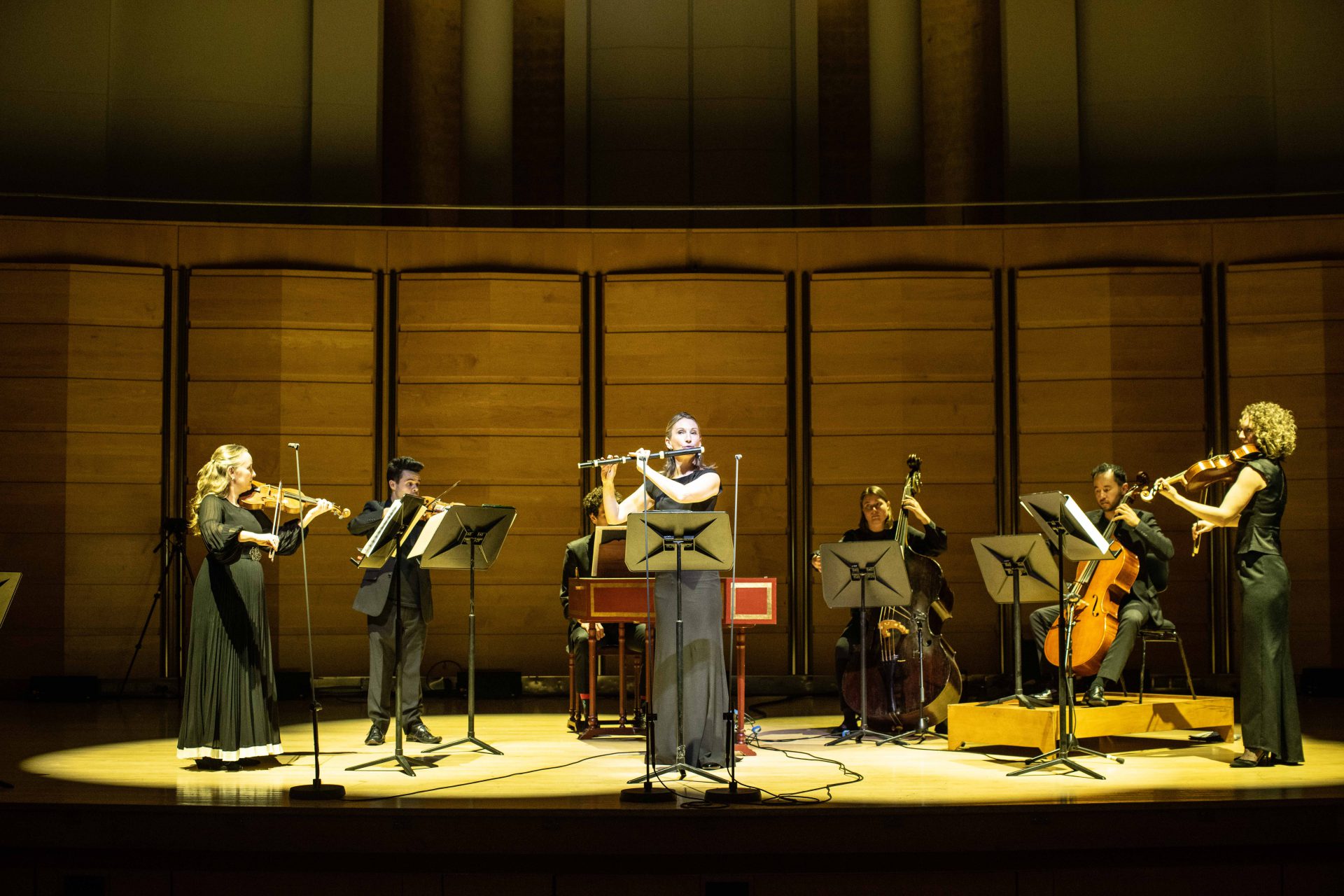This concert was a turn to the Baroque for the Australian Haydn Ensemble.
The ensemble found itself equally at home in what some might perceive as the hinterlands of the early Baroque, including music by Biber, and later composers such as Hasse, Telemann and, of course, Vivaldi.
Vivaldi’s Concerto for Stings in F major (RV 136) began with the musical equivalent of a flash of lightning. Skye McIntosh and Matthew Greco on violin mastered well the Italianate verve and irrepressible energy of Vivaldi’s allegro movements, though at times the strings became too faint and almost diffident. The Andante is a change of character, featuring shortly-phrase, almost episodic, passages exchanged between violins accompanied by pizzicato basso continuo.
David Greco then appears to perform an aria, ‘Chi alla colpa’, from Vivaldi’s Armida al campo d’Egitto. But this is not before a short and punchy recitative that sets the scene. The strings introduce the foreboding melody, and one is left to wonder how the baritone voice will fare imitating this meandering melody. But this Greco did, and to great effect.
Enter Melissa Farrow on baroque flute. The introductory section is a discourse between flute and strings that lulls the audience in the manner of a cooing dove (to depict the words ‘turtur gemo’) – an example of musical rhetoric that can be seen even in Bach’s Actus Tragicus. The word-painting continues with Greco’s plaintive, wavering, voice.
Then comes Vivaldi’s La Notte, which continues the programmatic theme. It is at once melancholic and menacing, and the mystical element of the piece was encapsulated in a remarkably persistent trill that was performed deftly and with a hint of expressive vibrato by Melissa Farrow. This is all before the ensemble breaks out into the fiery passages for which the Red Priest is famous. This is to say nothing of the tremolos, staccato passages and cascading passages that follow. These tricky passages were no match for Farrow, who despatched them as though in a quick breath.
Greco returned, for two dramatic arias – ‘Orribile lo scempio’ and ‘Gelido in ogni vena’. The first dramatically rejoices in the destruction of heresy, though at times it seemed the voice lacked the piercing forcefulness which the lyrics called for. The second was a poignant aria depicting an equally poignant operatic scene – a father’s realisation that he has just killed his son. It begins familiarly, with the strings played sui ponticello a la Vivaldi’s ‘Winter’. The glassy effect (used to depict the text – ‘ice in veins’) is redolent of Purcell’s ‘Cold Song’. Greco’s dynamic control and improvised flourishes stood out.
The second half was Telemann’s. First was his Sonata a 4 in A minor TWV 43:a5. The Italian influence shine throughout. It had all the vitality of a Muffat Collective concert, and this is no surprise given the composition of the ensemble. The cantata that followed inspired the title and theme of this concert – Die Stille Nacht. It is more vivid and punchy than the average Bach cantata. Greco was it his best where his voice was clear and booming in the more forceful passages – like the resounding howl at ‘schrecken’.
The highlight of the night was Hasse’s Concerto for Flute in B minor. Here was music that was studied yet effortless. It had virtuosic flute solos which featured Farrow at her best.
